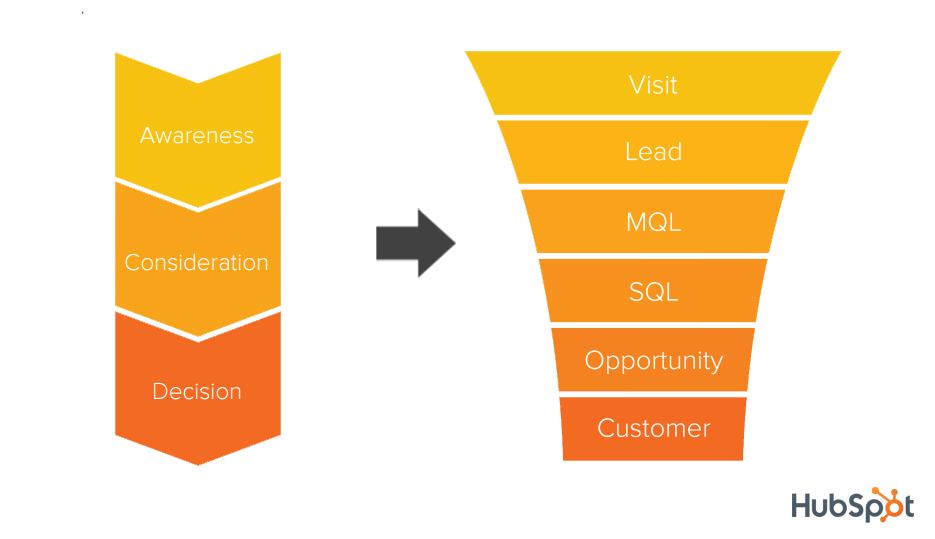You can churn out as many pieces of content as you like, but if your target market isn’t reading them, your efforts are all for naught. For content marketing to be a successful strategy, your intended audience should be consuming it.
The target audience in marketing is your ideal customer base—a group of people having the general set of attributes that qualify them as potential customers. Everyone in your target audience is similar in many ways, but they also have characteristics that they don’t share. Therefore, as much as possible, your content should be speaking to an individual person’s pain points and challenges.
This is where buyer personas come in. Buyer personas are detailed semi-fictional representations of your ideal customers—who they are, what they’re trying to achieve, their goals, and their motivations throughout the buying cycle.
Information used to create the buyer persona is based on both independent and market research, insights from your current customers through surveys and interviews, and from trends in the overall market. Depending on the type of business, you could have two or more personas; some even go up to 20. But for those just starting out, it’s recommended to stick to 3 or less.
The Advantages of Persona-Based Content
Content that offers a broad value proposition to a wide audience ignores the potential diversity within the group; it means missing out on opportunities for engagement and conversion. With persona-based content marketing, you can enjoy the following benefits:
-
More relevant and shareable content that fit the concerns and interests of your market
-
Opportunity to link your content to products and services as it is mapped against the buying cycle
-
Sets the right tone and style for more engaging content
-
Encourages integration of digital and traditional marketing channels
-
Provides a more objective method for deciding since buyers don’t have to rely on a manager’s prejudices
Persona-based marketing can help you yield twice the average sales pipeline because it engages prospects early on more effectively. In comparison, an average 60–70% of non-persona-based content goes unused.
Applying Personas to the Buyer’s Journey

The easiest way that you can use your buyer personas in content marketing is to map it out to the purchasing process.
-
Awareness
The first stage makes the personas aware of their problems that need to be fixed, while your business generates leads. In this step, it’s important for content to be vendor neutral with the goal of educating, not promoting. It should be light-hearted, easy to read, fun, and shareable, not sales-y.
Content like blog posts, guides, and industry news are perfect, but you can also utilize thought leadership that aligns with your brand’s message, although it shouldn’t single out your brand or its products. Also, keep in mind that SEO is incredibly important during the awareness stage to drive traffic.
-
Consideration
Prospective buyers then try to find a solution—a content piece that speaks directly to their pain points. Therefore, it’s only natural to create and publish content that would keep your prospects engaged as they move further down the funnel.
While the prospects are not yet ready to purchase, they should already be aware of your brand. However, don’t just force your offerings to them; instead, discuss ways to solve their problems and relate to them on a personal level. In this case, long types of content like analyst reports, purchasing guides, industry leader or influencer interviews, and ROI calculators can help build trust and nurture the relationship.
-
Decision
Finally, your prospects decide to turn into buyers. You can now be brand-specific and freely talk about your products and services. They are now interested in your business, so you should inform them about how they can best utilize your products and services.
The best content to offer in this stage is product features, demos and trials, tools and comparison pieces, and customer testimonials. Don’t forget to include material that may be relevant after the purchasing stage and information that can simplify payment methods for those who are ready to buy.
When your buyer has a positive experience with your brand, they can become your best advocates. Customers become infinitely more valuable when they start bringing in referral business.
Better Content through Buyer Personas
Here are other ways your curated buyer personas can help in your content marketing efforts.
-
Speak their language; include buzzwords
Your content will be using scenarios that clearly demonstrate the challenges of your audience—make it easy to grasp by using the language and words that they recognize and use. Buzzwords that relate to their struggles can also be used in your content’s title or subheads to increase relevance.
-
Provide answers to exact questions
Offering detailed solutions to your prospects’ struggles can create value, trust, and gratefulness. It also means that you used your deep understanding of their pain points. You can learn more about your market’s potential problems by digging deep into the data like workplace environment, demographic, and personal beliefs. In turn, you can develop highly-personalized communications strategies that drive more engagement.
-
Have a human-centered approach
Content should understandably have a human-centered approach—when you produce and design them, consider the people who will be consuming it. That means creating material that will elicit a response or reaction but still reflective of your audience’s values and goals.
Triggering emotions from consumers can add value to your content. You can include controversial topics (for instance, climate change) and watch your viewers and readers experience fear, curiosity, passion, or empathy. In addition, show them that you understand their needs; speak to them directly and use quotes, case studies, examples, and imagery from real-life people that fit their buyer persona.
Aside from being informative, your strategy must be transparent and authentic. Create content based on issues that they care about.
-
A goal-centered methodology
Informative content aims to convert a prospect into a sale for your business. However, keep in mind that your audience also has a goal or a challenge they need to resolve. When you understand your customers’ goals through qualitative research, you’d be able to offer enabling content that’s mutually beneficial for all.
Beyond Content Marketing
A clearly-defined buyer persona is one of the most useful tools for your digital marketing efforts, including email segmentation. With it, you get to identify your prospects’ interests, challenges, and motivations, as well as the channels to utilize in sending out your message.
When the right content lands right in front of your audience at the right time, engagement increases. This makes things easier for your business to expand its content marketing endeavors to reach a broader audience that falls into any of your buyer persona categories.
Content marketing is effective when it resonates with the person you are trying to reach. Work to understand your customer’s experience in its entirety so you can provide the right information that moves them closer to an eventual purchase decision.






